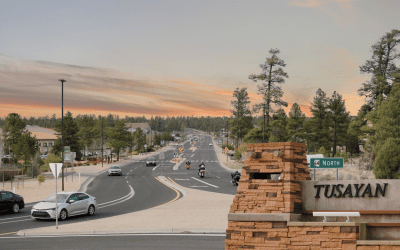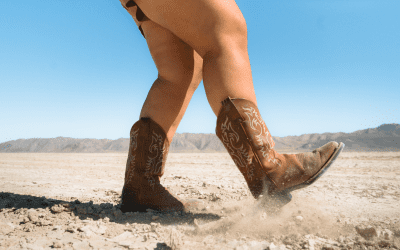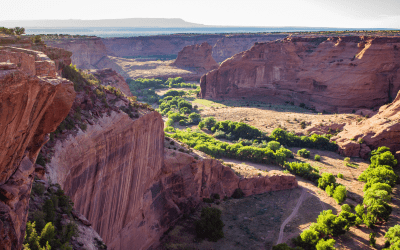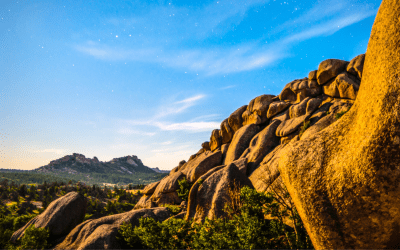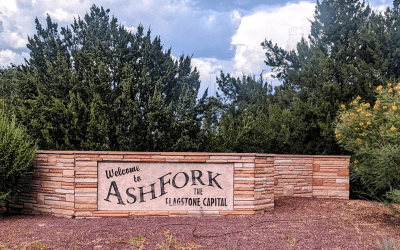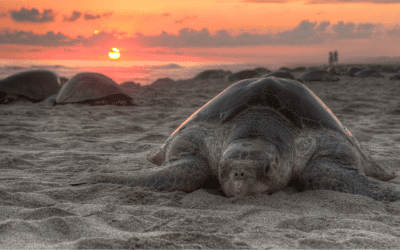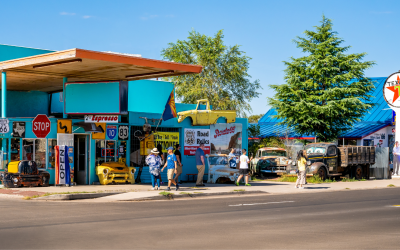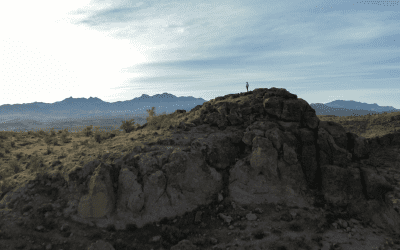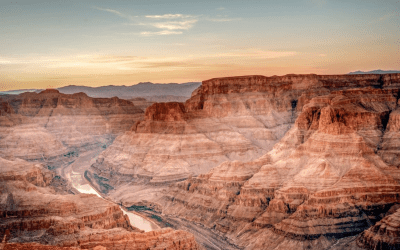I have a confession. Before I was properly educated on outdoor ethics I left a mark on the landscape. I don’t express this with pride, rather to emphasize that we as humans aren’t perfect, but we are capable of learning and always doing better. With an onslaught of information and guidance about Leave No Trace, state education initiatives such as Appreciate AZ, and Instagram accounts shaming travelers who tromp on wildflowers, how can we not help but to do better, collectively? It’s about leaving Arizona better for the travelers who come next, whether that is tomorrow, in a week, a year, or centuries from now. As I reflected on my own behaviors in the outdoors, I thought about the ways we work to reduce our impact as an entire family as we enjoy Arizona’s outdoors together.
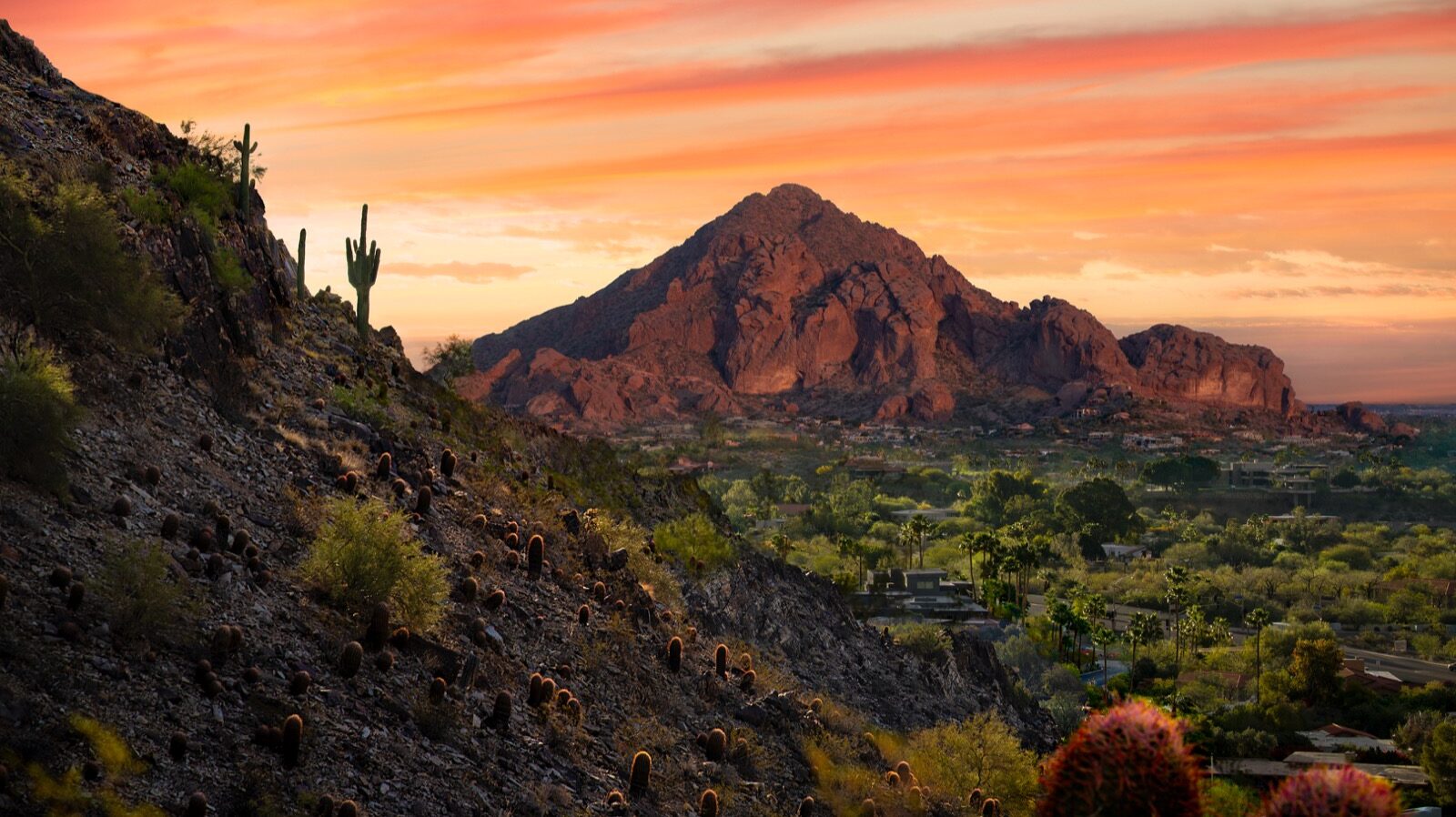 Photo: Arizona Office of Tourism
Photo: Arizona Office of Tourism
This story was created in partnership with Visit Arizona.
Traveling with my partner
As a couple of 30-somethings with no kids, we are keen on spontaneous adventures like, “you want to go backpacking this weekend?” We generally seek out less-visited destinations, but we always have the same three considerations in mind. These follow the principles of Appreciate AZ and are especially helpful for backpacking trips across Arizona:
- Permits: Do we need one? Some wilderness areas require a permit to camp in the backcountry. Sometimes they can be acquired right at the trailhead, but often they must be issued in advance through the Forest Service or at a park’s visitor center. This will quickly dictate where we can go last-minute.
- Planning ahead: What else do we need to keep in mind? Some backcountry areas require that all human waste be packed out. If this is the case–our, ahem, “sh*t kit” will include something like a W.A.G. Bag. Do we need a bear canister? Is there a fire ban, or are fires even allowed where we are camping? If not, we might pack a few extra base layers to keep warm at night, and surely bring a stove to cook with. Pro tip: always test the fuel and stove before the trip. Please, please learn from my mistake on this one!
- Weather: We aren’t scared to hike and camp in rain, but it’s always important to be as prepared as possible with proper rain gear, pack covers, and our tent’s rain fly. Extra soup and coffee are a must on trips like this to stay warm, too!
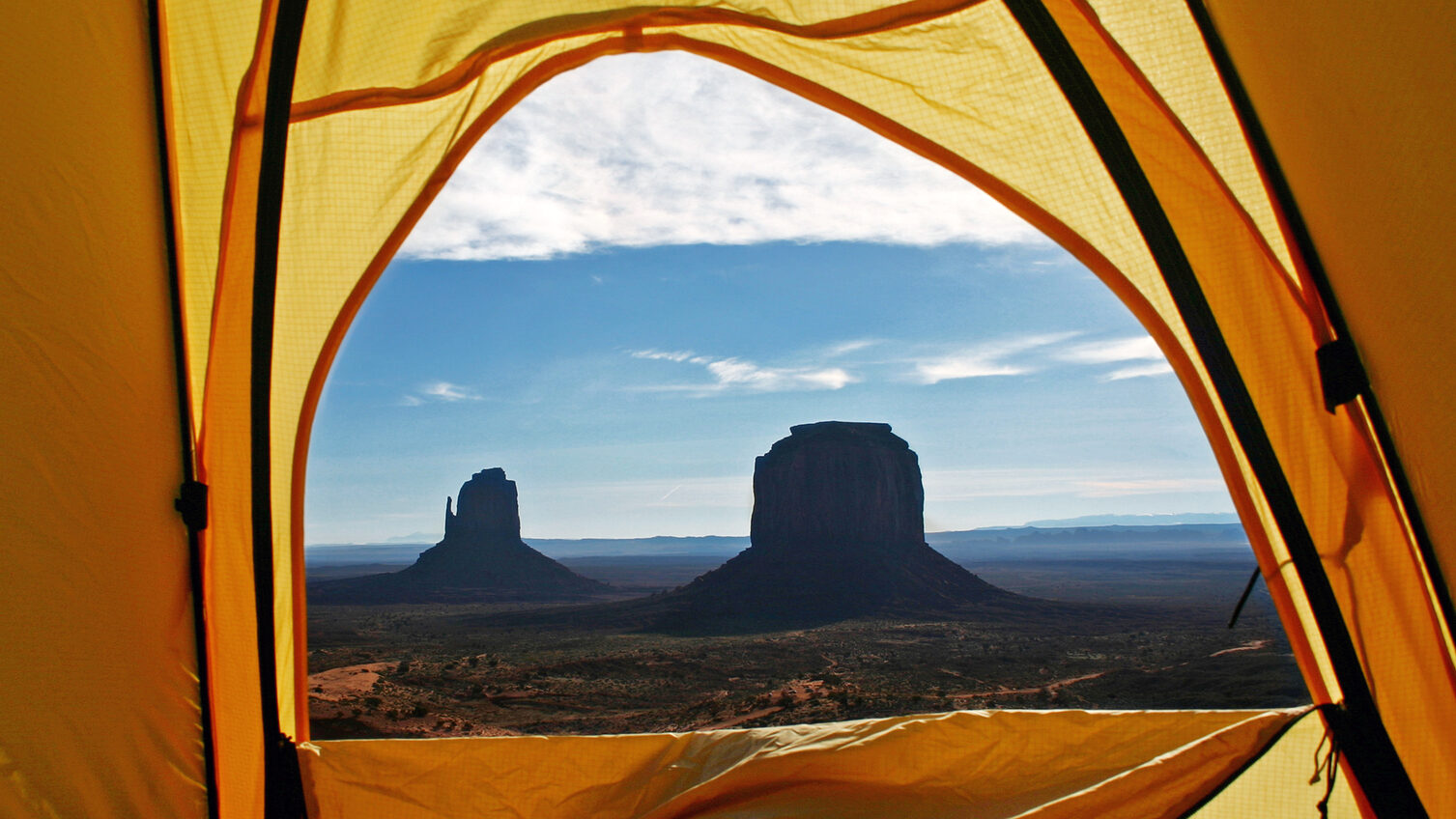 Photo: Arizona Office of Tourism
Photo: Arizona Office of Tourism
Traveling with my sister’s family
My sister and brother-in-law have two young, adventurous boys. Trip planning and execution for them looks quite a bit different than it does for me, or me and my husband. Over the years, they have upgraded their camping scene from a large family tent to a vintage Airstream. When I travel with my sister’s family, I admire some of the ways they demonstrate sustainable and responsible recreation:
- Dispersed camping: When tugging their Airstream outside of a proper RV campground to a more remote, dispersed site, they always find a durable surface to park on. They also bring an extra container for gray water (just in case!), and scour their site for trash and pack it all out.
- Campground courtesy: My nephews haven’t seen all the bucket-list attractions in Arizona, so sometimes that means staying on more familiar routes and stopping at more frequented locations. If they have to run their generator while camping, they do so intermittently and only when necessary (there’s no TV hogging all the power in there!). Also, they don’t allow the boys out of the Airstream before 8 a.m. so as to not disrupt other campers. Finally, they are conscientious about excessive lighting and light pollution–especially when traveling in gorgeous dark sky areas, of which there are so many in Arizona! Less light pollution = more stars to gaze at over the Grand Canyon!
- Stay on the trails: My sister actually packs extra shoes for everyone and reminds the boys that it’s okay to get a little muddy on the trail if it means that you stay on it. They don’t step off-trail to avoid mud, and when they return to the car they can put on some dry shoes.
 Photo: Arizona Office of Tourism
Photo: Arizona Office of Tourism
Traveling with my parents
My parents love to road trip with their camper-trailer in tow. Instead of traveling with four girls now though, they travel with their four dogs. For my parents and their pups, travel planning is a little different.
- Waste disposal: They have to pick up someone else’s poop… their dog’s poop that is. Not only is feces at a campground or on a trail unsightly, stinky and frustrating to step in, it can contaminate soil and nearby water sources, or even spread disease to other animals and humans.
- Campground courtesy: It’s important to them to remain courteous to fellow travelers by not letting the dogs bark. When parked at an RV campground with hookups, they can leave the radio on inside the camper–not loud enough for people outside to hear, but loud enough that noises outside the camper are hushed to the dogs. Exercising the pups and keeping them on a routine helps as well.
- Advance planning: Traveling with dogs requires planning ahead, always. Knowing which trails and parks are dog-friendly is key. Most national parks don’t allow dogs on trails, but will allow them in certain developed areas. Having to leave your dog in the car (is it hot out?) is not the right answer because proper planning wasn’t in place. So much of Arizona is dog friendly that it’s easy to experience culture, cuisine, and vineyards between hikes with their four-legged family.
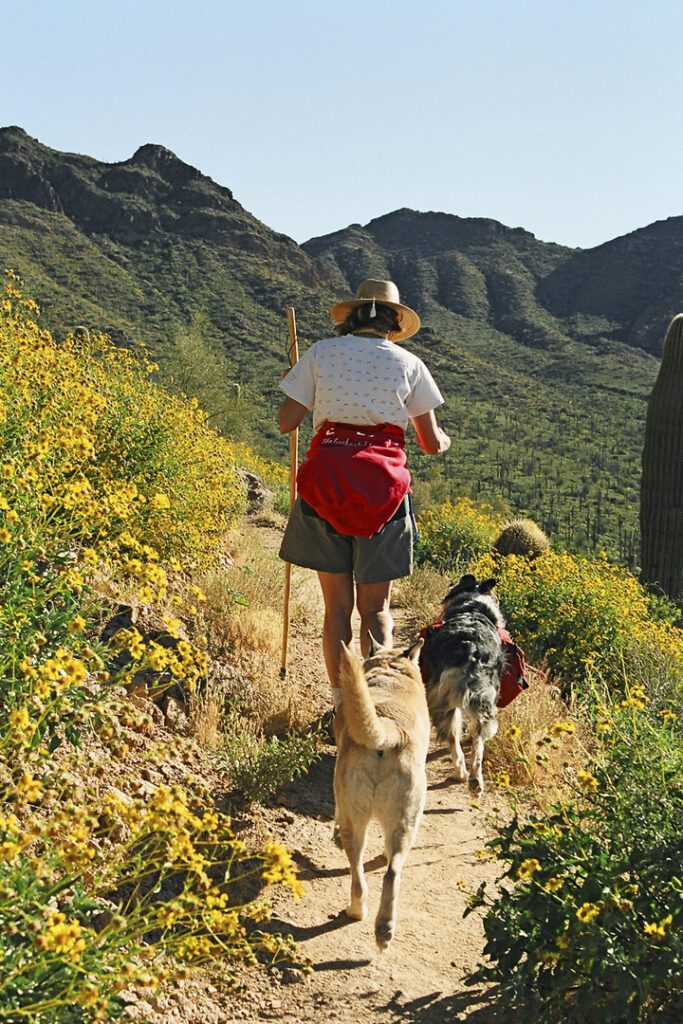 Photo: Arizona Office of Tourism
Photo: Arizona Office of Tourism
Traveling alone
Solo travel is simply refreshing. I love the detox of noise and space to clear my head. I always meet interesting people on the trails or at a local wine tasting. Traveling alone does require a little extra thoughtfulness though. Here are three ways I reduce my environmental impact as a solo traveler:
- Plan ahead: I always tell others where I’m going and what I’m doing. It’s important to understand the details of the trail: the elevation gain, mileage, potential obstacles, weather report, and so on.
- Keep it in my ears: I think nature is the best soundtrack, but sometimes I want to listen to music or a podcast while I’m exercising on a trail. If I do, I always wear my earbuds and make sure the volume isn’t so loud that I can’t hear someone (or something!) approaching from behind.
- Trail courtesy: When I’m hiking solo and encounter a bigger group on the trail, regardless of the direction I will always step off trail to let them pass. Even if I’m moving uphill (and technically have the right-of-way), I know my impact would be less than that of a group having to step off trail.
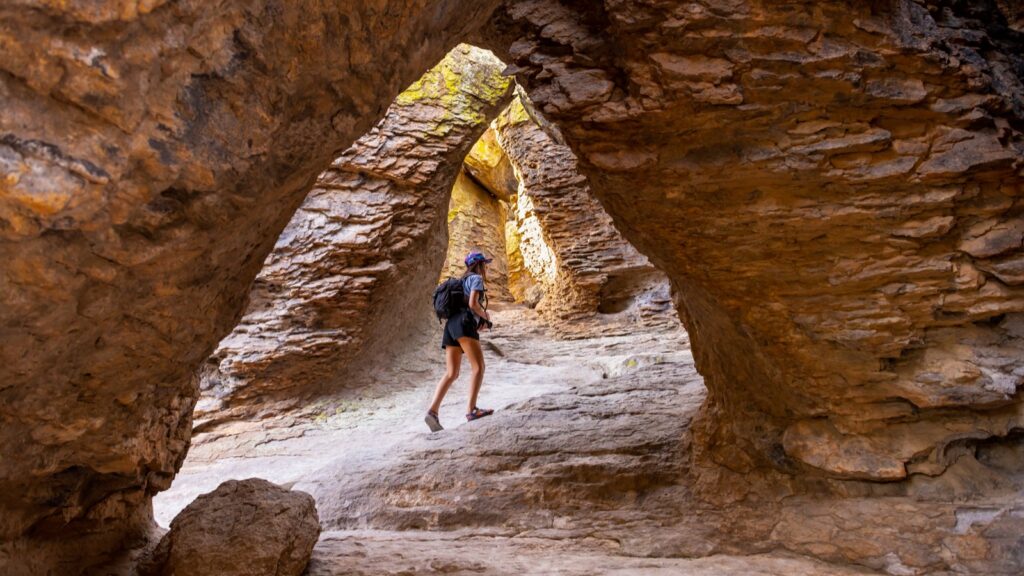 Photo: Arizona Office of Tourism
Photo: Arizona Office of Tourism
On the road and at home
As I’ve integrated the principles of Leave No Trace and Appreciate AZ into my travel, I’ve also become more aware of how that level of care and responsibility for my surroundings has trickled back into my habits at home. I pick up trash on the sidewalk, recycle regularly, and always use a refillable water bottle. These small habits make a difference for my home state and remind me that the principles of responsible recreation are just as important when I’m home and when I’m on the road.



